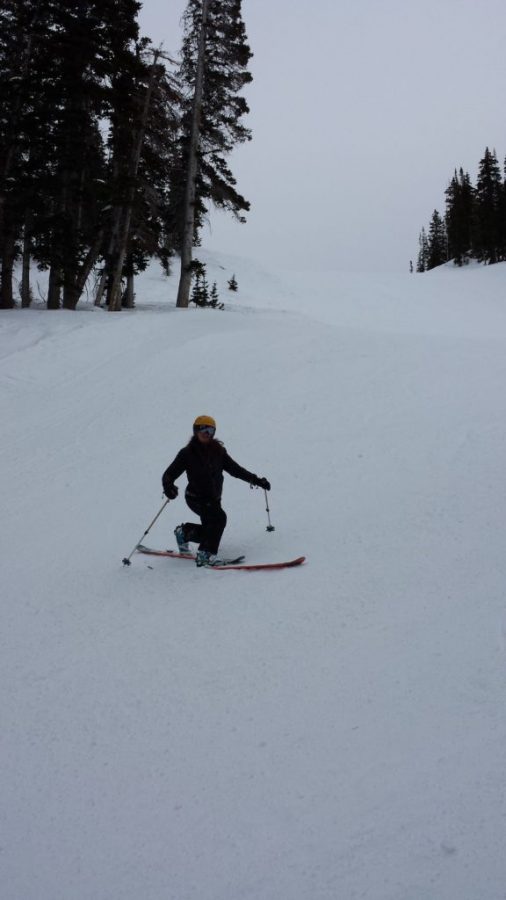When I told people I was learning to telemark ski, I was met with a baffled, “Why?!” Why would I pick a quad-burning, knee-banging, slippery new sport with a learning curve when I could just continue on my merry downhill way?
The first time I slid spread-eagled down a slope, I admit I missed my alpine bindings. And the second time. And the third time. The truth is, for at least my entire first day out on tele gear, I felt like a baby giraffe on roller-skates—awkward, gangly, and confused. However, I was quite possibly the happiest baby giraffe around, because whenever I did drop into a clean turn, it felt absolutely fantastic.
After about three runs, fantastic became fatigue. All the downhill runs in the world cannot prepare you for the burn of well-linked telemark turns. It is possible to parallel telemark, or “paramark,” which means making turns on tele skis without dropping the heel in a full stance. This is a huge help especially when learning to avoid gassing out within your first hour free-heeling. However, even while paramarking, a well-balanced neutral stance is crucial to avoid flying forward and face-planting. If you can navigate a mogul field or drop a cliff with telemark bindings, rest assured you can do it on alpine bindings. It doesn’t take long on a pair of tele skis to realize that this sport will make you strong, well-balanced, and confident both on free-heel and fixed-heel equipment.
Once I was ready to try some softer, off-piste (ungroomed) snow, the fun really began. Frankly, I wasn’t fully committed to the whole telemark thing until I dropped a turn in powder and felt fresh snow hit my face. When you make telemark turns, you are alternating lunges. It seems obvious, but this results in a deeper crouch, bringing you closer to the snow compared to alpine skiing. In powder, this significantly improves your chances of getting those coveted face shots.
Out of powder a lower stance puts you in closer contact with the terrain of a slope; moguls feel bigger, steeps feel steeper. It’s more difficult to blast through features and you’ll likely take longer to get down the mountain. In the backcountry, after spending hours slogging up a slope this more prolonged descent means you’re going to get every last ounce of enjoyment returned from that sweaty climb you made.
Compared to regular alpine downhill bindings and boots, tele gear is light as a feather. The accordion-pleated toe in tele boots also accommodates a much more natural gait while walking. So, when you decide to take off your skis and boot-pack in resort, you’ll be amazed at the newfound ease and speed with which you find those last powder stashes. While alpine touring or randonnee equipment is comparable in weight, it can out-price decent telemark gear by hundreds of dollars. If you’re looking to break into the world of backcountry skiing without breaking the bank, telemarking is definitely worth a try.
After spending winter break getting the hang of telemarking, I’d say I now feel like a puppy on roller-skates instead of a baby giraffe. Alpine skiing is the easy choice, but I can attest there’s an exclusive coolness factor to telemarking. Competing bumper sticker slogans from the 1980’s say it best—“Free the heel, free the mind!” and “Drop knees, not bombs!” are met with “Fix the heel, fix the problem!” But one K2 sticker sums it up: “randonnée: French for can’t tele.”



Susan Ross
Jan 10, 2017 at 3:49 pm
Very inspiring write-up. Sure makes me want to go!